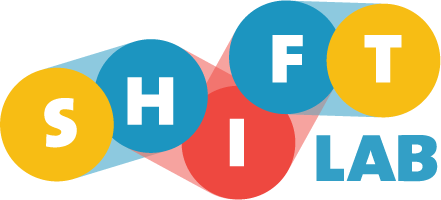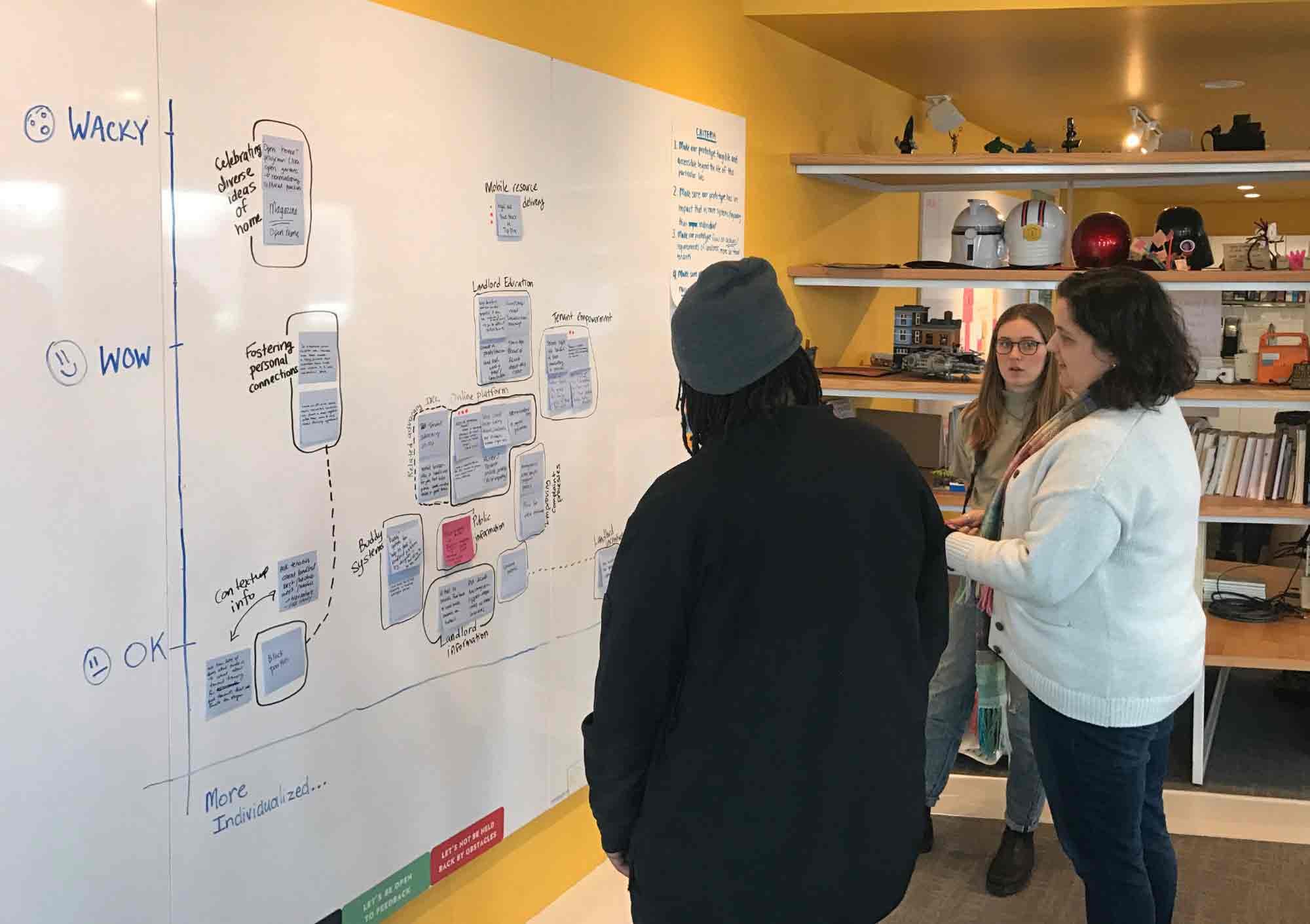Shift Lab Prototype: Mobile Legal Aid
Hey, what’s the big idea?
The blue team prototype came to life after we collectively identified that there was a need to address housing, especially its tight-knit relationship with poverty and racism in our city. After several sessions of exploration and defining crucial terms, we came together around the issues that racialized individuals face with their landlords, due to factors such as prejudice and bias, cultural practices, and family structure. We explored these issues through research with a handful of government staff, non-profit staff, low-income residents, and landlords. Several conversations and discussions made clear to us that the landlord and tenant relationship was critical, and we began to look for ways to create change in this space, especially in terms of the power imbalance between landlords and prospective or current tenants.
Different communities of colour have different specific needs, but we learned that many experiences are broadly shared across communities, and that lack of knowledge and lack of access to resources and services are common barriers to tenant empowerment. When issues arise between landlords and tenants, the scales tilt largely in favor of landlords. This situation is exacerbated for marginalized people, who are more likely to face issues with landlords and therefore have a greater need for assistance. Once an individual has an eviction in their rental history, it can perpetuate a cycle of difficulty in accessing and retaining housing. From here, we ultimately landed on our big question: How can we address this imbalanced relationship between racialized individuals and their landlords, and make that relationship more balanced, empowering marginalized people to meet their needs?
Early feedback stage for the prototype
What does the prototype do?
Our prototype focuses on consolidating resources and creating a one-stop pop-up shop of service provider contacts and referrals, which will help to remove barriers through mobile service delivery. Or to put it much more simply, it’s a van: we tend to picture it as a less delicious but more empowering food truck (but also maybe with ice cream). This model allows us to rotate in staff from various agencies to meet specific needs, all under the one model of mobile service delivery. It also enables us to explore ideas like ‘legal triage’—someone with some amount of legal knowledge (like a law student) who can sit down for 10 minutes and be able to point people to the right process, resources and information on their rights, or where to go for further legal advice.
Our current prototype is staged, with Stage One delivering information and resources, some degree of legal advice/assistance, and service navigation/connection. Stage Two of our prototype would expand the services available through the van to include: direct referrals (which would include a need for knowledge of what needs to escalate, and a potential for follow-up/support); assistance with producing video/photo evidence (for use in documenting and resolving tenant/landlord disputes); and higher capacity for legal advice (whether through onboard service provision or via a video link).
We have also prototyped a process for identifying the route the van will take and other details of van logistics, which can be explored on our poster.
Who we are looking to serve?
Our prototype development has been geared towards functioning at the grassroots level, where we will aim to engage predominantly with people of color, low-income status individuals, immigrants, and refugees--those who we know might require additional assistance to navigate the current administrative systems to secure and retain housing. There are many resources available in our community, but our research identified several barriers for access. In order to eliminate these gaps, we decided to bring our service agency vehicle to life.
Through our ethnographic research, we learned about the systemic barriers individuals face when navigating both housing and support systems. Aspects such as language, cultural differences, hours of access, and administrative processes serve as barriers across these systems. In order to increase the ability of individuals to access inclusive support, we propose working together with local non-profits, legal professionals, social workers, and increase awareness, availability, and connection rather than the creation of new and potentially redundant resources and services. Most importantly, we are hoping that our initiative will be able to support a variety of individuals, by combining different practitioners and resources for different van routes, and by working collaboratively with community organizations, leaders and connectors.
Brandon Wint and Vanessa de Koninck chat with lab graphic recorder Molly McMahon
What’s next?
We know there are a number of questions we need to consider before launching a full-scale prototype of our van. We want to ensure that those who visit the van are safe, and don’t experience any retribution for doing so. We also know they need to trust that visiting a mobile resource is just as dependable and secure as an office location. And we need to keep the staff inside the van safe, in case they visit a location where they don’t get such a positive response. And then there are questions about the van itself--who will own and insure this van? Where can it park and operate? And how feasible is a van in the winter?
Luckily, there are a few agencies in Edmonton who already deliver services through a mobile method, so one of our next steps will be to have some discussions with them to inform our understanding around some of these questions of client experience, feasibility and logistics. Through the prototype research and testing process, we have also identified a number of interested individuals with whom we will connect to build some further insight and start to scope out potential partnerships. We also want to do some more ethnographic research, to make sure this ‘solution’ is the right fit for people’s lived experiences.
With those further pieces of information in place, we’d then be ready to start some field testing in earnest. This will likely look like some testing of the space and logistics aspect of the prototype, as well as some testing of the pooled resources concept. We know that we have a bit of work ahead to finish rounding out our prototype, but we are absolutely thrilled to continue that discovery as we progress forward in the social innovation journey.
Written by Vanessa de Koninck, Vivian Kwan, and Brandon Wint.
Prototype poster by Molly McMahon.



